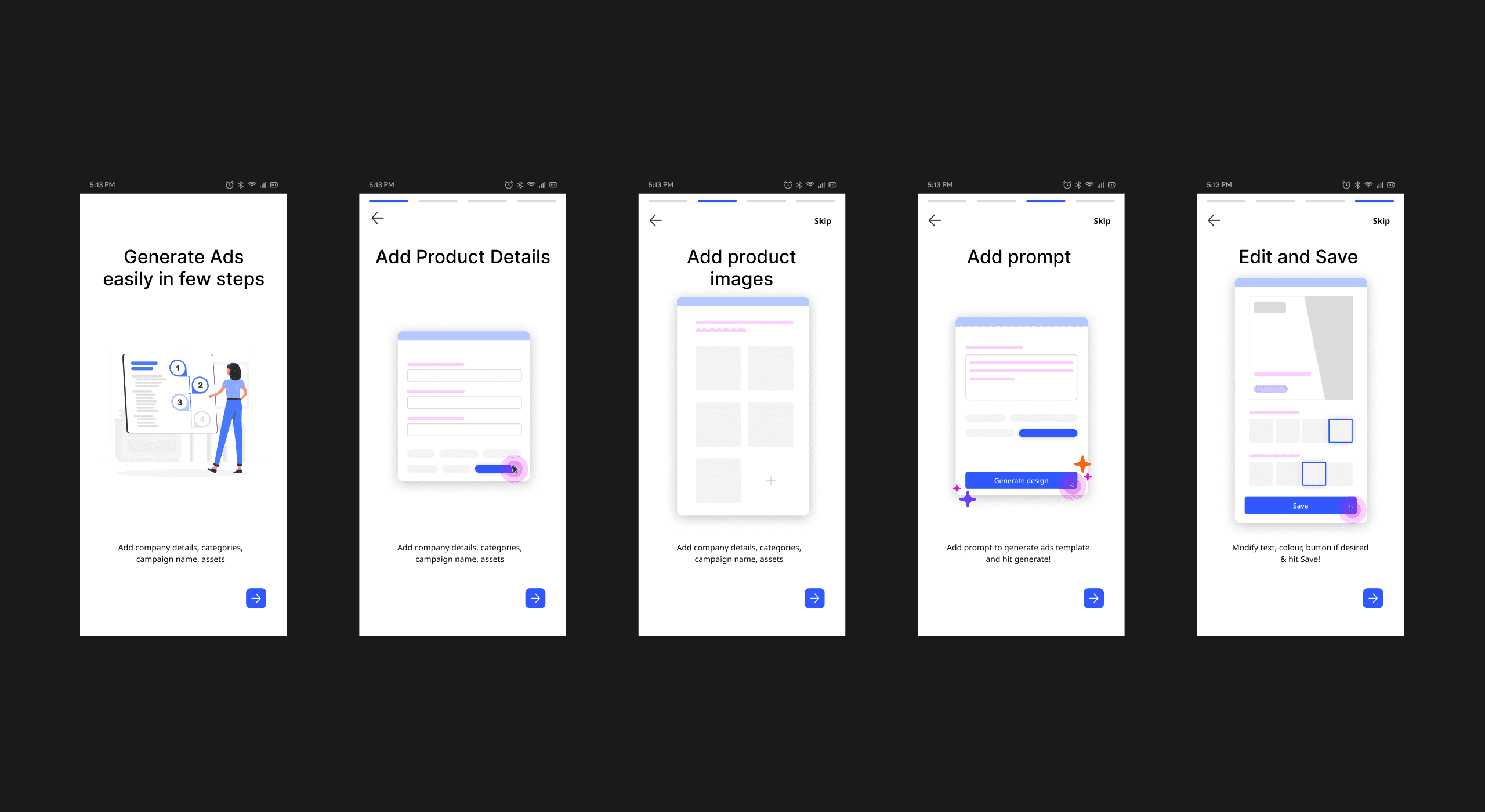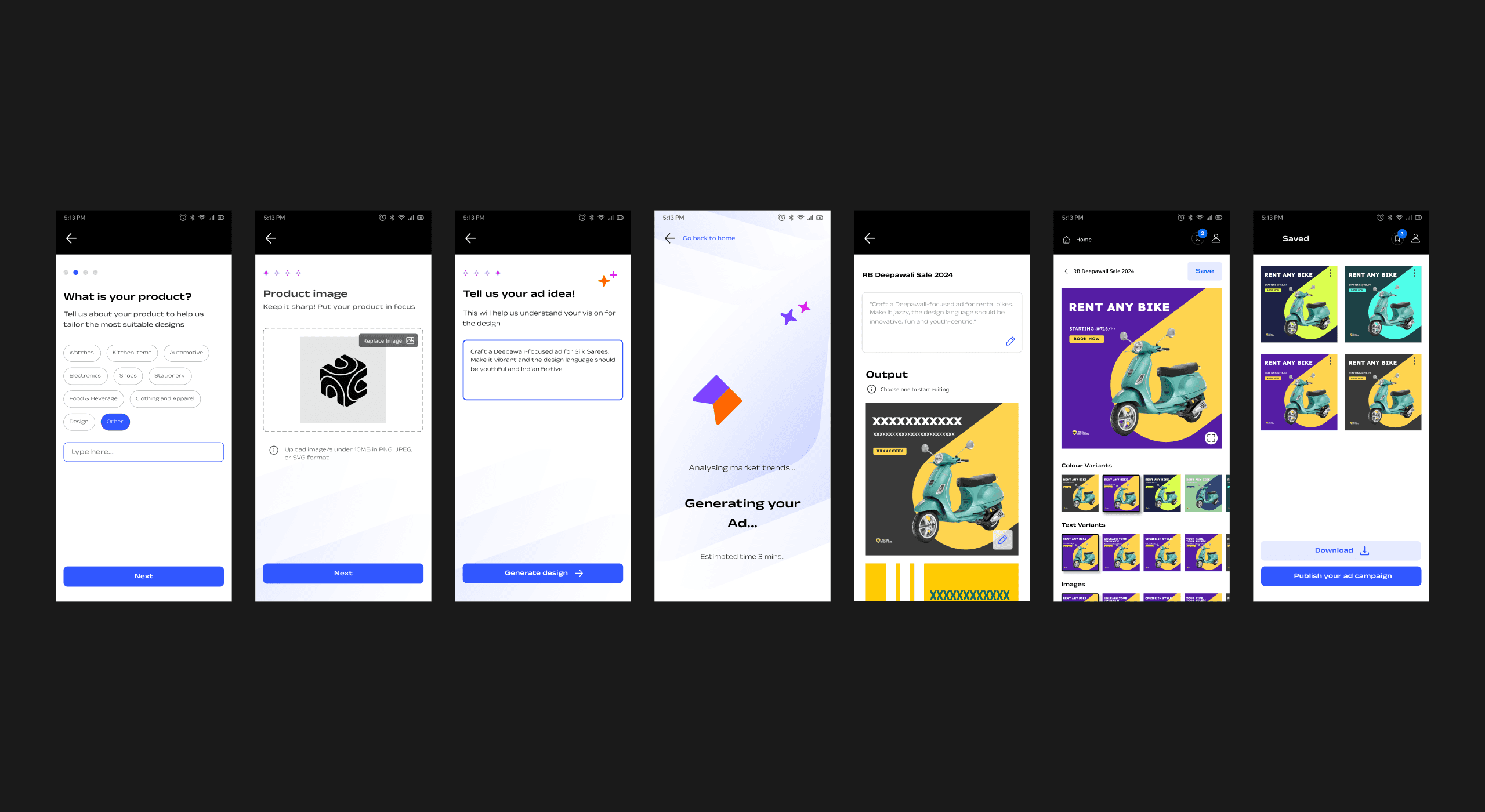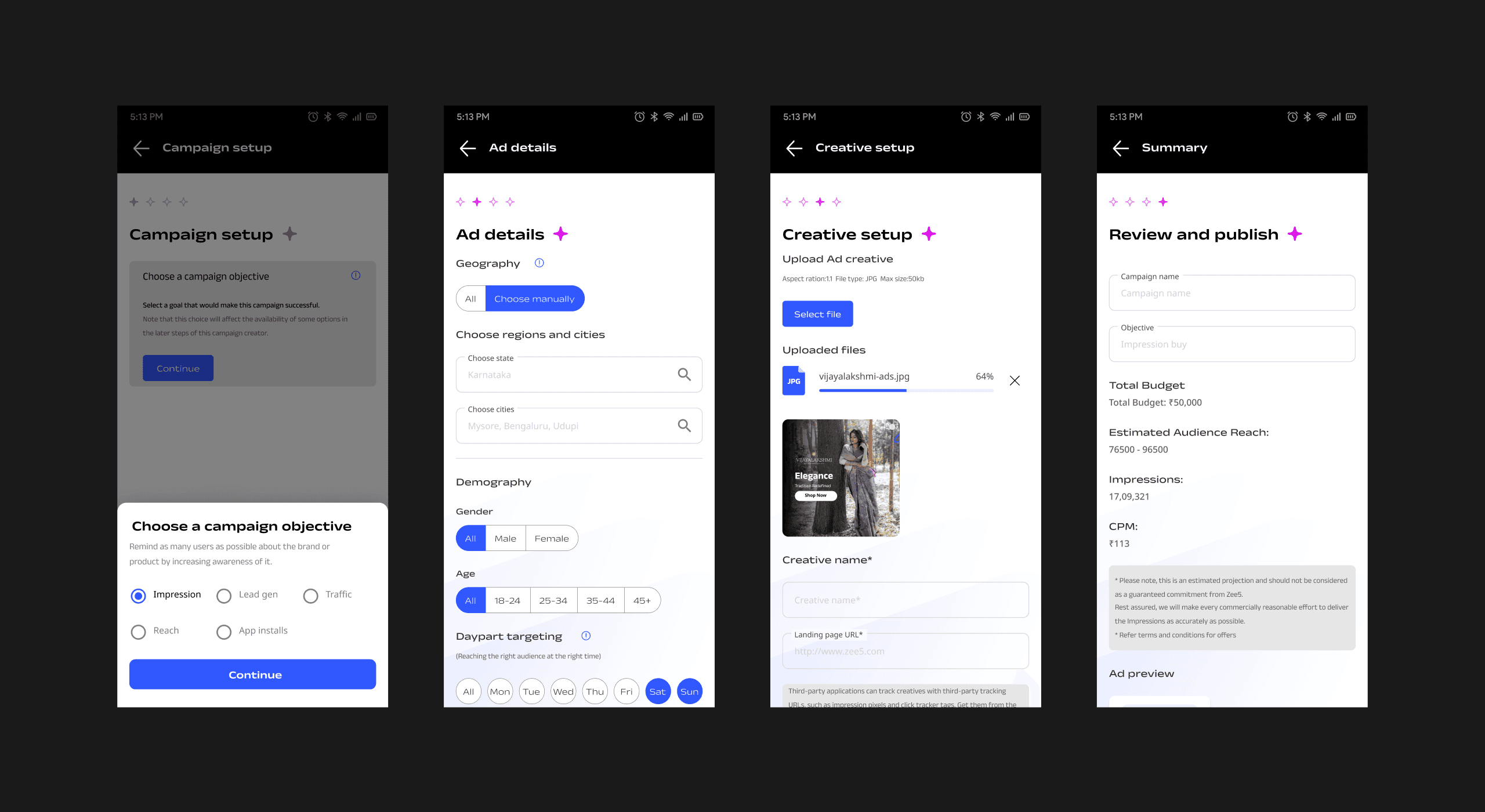


Process
The design process for the Adpod app involved several key stages. Firstly, we conducted extensive user research to understand the brand and promotion needs of small and medium enterprises. Our goal was to replicate an ad agency-like experience where users can create archetypes and manage advertisements through a single solution.
We also needed to collaborate with the data science team and developers to explain the design process of creating a brand and advertisements. This involved detailed explanations to help the model understand design theories and create large datasets for our LLM to learn from.
Once we gathered the necessary insights, we began designing the wireframes and information architecture. After testing the wireframes, we worked on the app's UI and tested the application with our partners, which helped improve the model's outputs.
Process
The design process for the Adpod app involved several key stages. Firstly, we conducted extensive user research to understand the brand and promotion needs of small and medium enterprises. Our goal was to replicate an ad agency-like experience where users can create archetypes and manage advertisements through a single solution.
We also needed to collaborate with the data science team and developers to explain the design process of creating a brand and advertisements. This involved detailed explanations to help the model understand design theories and create large datasets for our LLM to learn from.
Once we gathered the necessary insights, we began designing the wireframes and information architecture. After testing the wireframes, we worked on the app's UI and tested the application with our partners, which helped improve the model's outputs.
Process
The design process for the Adpod app involved several key stages. Firstly, we conducted extensive user research to understand the brand and promotion needs of small and medium enterprises. Our goal was to replicate an ad agency-like experience where users can create archetypes and manage advertisements through a single solution.
We also needed to collaborate with the data science team and developers to explain the design process of creating a brand and advertisements. This involved detailed explanations to help the model understand design theories and create large datasets for our LLM to learn from.
Once we gathered the necessary insights, we began designing the wireframes and information architecture. After testing the wireframes, we worked on the app's UI and tested the application with our partners, which helped improve the model's outputs.












Outcome
The final outcome of the app was a highly user-friendly and engaging digital product that surpassed the client’s expectations. It significantly streamlined their workflow, enabling them to run effective campaigns in a shorter timeframe. Users could seamlessly create brand artifacts and advertisements in various formats and sizes. Additionally, they were able to set up campaigns effortlessly on popular platforms like Facebook, Instagram, and Zee5, and track their performance with ease.
Outcome
The final outcome of the app was a highly user-friendly and engaging digital product that surpassed the client’s expectations. It significantly streamlined their workflow, enabling them to run effective campaigns in a shorter timeframe. Users could seamlessly create brand artifacts and advertisements in various formats and sizes. Additionally, they were able to set up campaigns effortlessly on popular platforms like Facebook, Instagram, and Zee5, and track their performance with ease.
Outcome
The final outcome of the app was a highly user-friendly and engaging digital product that surpassed the client’s expectations. It significantly streamlined their workflow, enabling them to run effective campaigns in a shorter timeframe. Users could seamlessly create brand artifacts and advertisements in various formats and sizes. Additionally, they were able to set up campaigns effortlessly on popular platforms like Facebook, Instagram, and Zee5, and track their performance with ease.